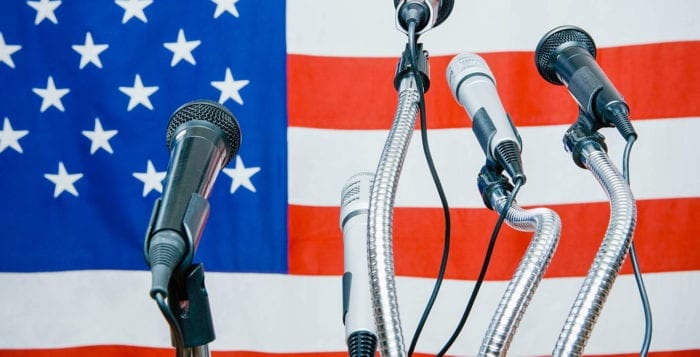Below is an editorial written by Judy Patrick, the New York Press Association’s vice president for editorial development.
We’ve been complacent.
We thought everybody knew how important a free press was to our world and that all this talk about us being the enemy of the people would be dismissed for the silliness that it is.
But the reckless attacks have continued, instigated and encouraged by our president.
When the leader of the free world works to erode the public’s trust in the media, the potential for damage is enormous, both here and abroad. We once set an example of free and open government for the world to follow. Now those who seek to suppress the free flow of information are doing so with impunity.
The time has come for us to stand up to the bullying. The role journalism plays in our free society is too crucial to allow this degradation to continue.
We aren’t the enemy of the people. We are the people. We aren’t fake news. We are your news and we struggle night and day to get the facts right.
On bitter cold January nights, we’re the people’s eyes and ears at town, village and school board meetings. We tell the stories of our communities, from the fun of a county fair to the despair a family faces when a loved one is killed.
We are always by your side. We shop the same stores, attend the same churches and hike the same trails. We struggle with day care and worry about paying for retirement.
In our work as journalists, our first loyalty is to you. Our work is guided by a set of principles that demand objectivity, independence, open-mindedness and the pursuit of the truth. We make mistakes, we know. There’s nothing we hate more than errors but we acknowledge them, correct them and learn from them.
Our work is a labor of love because we love our country and believe we are playing a vital role in our democracy. Self-governance demands that our citizens need to be well-informed and that’s what we’re here to do. We go beyond the government-issued press release or briefing and ask tough questions. We hold people in power accountable for their actions. Some think we’re rude to question and challenge. We know it’s our obligation.
People have been criticizing the press for generations. We are not perfect. But we’re striving every day to be a better version of ourselves than we were the day before.
That’s why we welcome criticism. But unwarranted attacks that undermine your trust in us cannot stand. The problem has become so serious that newspapers across the nation are speaking out against these attacks in one voice this week on their editorial pages.
As women’s rights pioneer and investigative journalist Ida B. Wells wrote in 1892: “The people must know before they can act, and there is no educator to compare with the press.”





